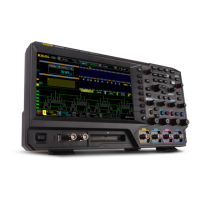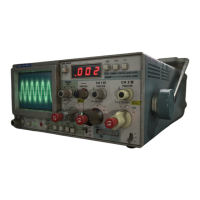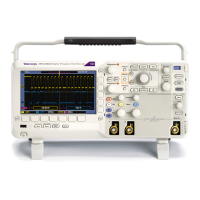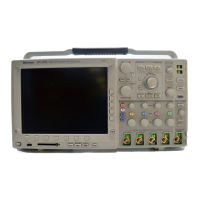Oscilloscope R eference Functional model
Functional model
The instrument has four high-level subsystem processes, consisting of both hardware a nd software
functions, and the data that connects them.
Digital signal acquisition system
This system
acquires a waveform record from each input signal you probe. This system consists of the
following subsystems:
Input Chan
nels. Condition the input signal, primarily through the use of analog hardware, before
converting the signal to a digital format.
Trigger S
ystem. Recognizes a specific event of interest on the input signal and informs the Time base
system of the occurrence of the trigger event
Time bas
eSystem. Triggers the Acquisition system to start an acquisition cycle. In more general
terms, synchronizes the c apturing of digital samples in the Acquisition system to the trigger events
generated from the Trigger system.
Acquisition syste m
This system converts and stores the analog signal to a digital format.
Signal processing and transformation
This system performs transformations or operations on user-specified waveform data (c hannel, reference,
and/or math waveforms). Automatic measurements, spectral waveforms, and histogram generation are
exa
mples of signal processing and transformation.
Display and UI
This system provides output (and sometimes input) of instrument-data elements in a form suitable to the
user and also provides user input control.
What do you want to do next?
L
earn about a process overview of the instrument operation.
(see page 676)
Learn about the Acquisition System. (see page 681)
DSA/DPO70000D, MSO/DPO/DSA70000C, DPO7000C, and MSO/DPO5000 Series 675

